Published on March 15, 2013
By January 1916, Francisco “Pancho” Villa and his men had been declared enemies by the US Government in the aftermath of an ambush of a train a month earlier in which 16 American passengers were seized, stripped and executed in cold blood. Public outrage was limited because the attack had taken place within Mexico. It would not be Villa’s last attack, however. On March 9, 1916, Pancho Villa lead his men across the border of the USA to attack the town of Columbus, New Mexico, home of the Thirteenth Cavalry under the direction of Maj. Frank Tompkins. Villas guerrilla forces crept in the dark of night and attacked by surprise, killing 18 members of the cavalry before being pursued southward into Mexico. They didn’t make off with much in the way of supplies, ammunition, or weapons, but he did capture some horses and food. As well, he laid waste to much of the small town.
Enraged, the President of the United States, Woodrow Wilson, ordered Major General John J. Pershing to lead an expedition into Mexico to find, engage and capture Villa. To support that effort, 4,800 men, including cavalry on horseback and some of the new Dodge armored cars were assigned as well as the US Army’s first and only air assets — the 1st Aero Squadron. Today in aviation history, on March 15, 1916, the 1st Aero Squadron arrived in Columbus, New Mexico, to join Maj. Gen. Pershing’s forces in what was to become the first combat engagement of American Army pilots and airplanes. The invasion of Mexico was underway.

About the 1st Aero Squadron
Just three years earlier, on March 5, 1913, the 1st Aero Squadron had been formed within the Army Signal Corps under the command of 1st Lt. Thomas DeWitt Milling. Eight aircraft were assigned and a small group of pilots, mechanics, administration and logistics staff and others were brought on. By December, the formal organizational chart had been defined, dividing the squadron into two companies of four aircraft each, commanded by eight officers and supported by 45 enlisted men. Initially, the 1st Company of the 1st Aero Squadron had four Burgess Model H biplanes, while the 2nd Company had a mixed collection of Curtiss aircraft — a Model D, Model E, Model G and a fourth Model E that the 2nd Company assembled from spare parts that had been provided to support the other aircraft!
By 1916, the squadron had retired its Burgess and Curtiss planes and acquired newer, better aircraft. The unit was now flying the new Curtiss JN-3 Jenny, with which they had checked out just four months before after a disastrous attempt to upgrade to the earlier Jenny model, the JN-2. Even the Curtiss JN-3 Jenny was underpowered with just 90 hp and as a result had trouble climbing higher than 10,000 feet. Nonetheless, it was a significant upgrade. Based out of North Island in California, the squadron had been doing work along the Mexican border on a number of short and long term deployments to Texas, Oklahoma and New Mexico. It was underfunded, inexperienced and ill-supplied — and under the Army Signal Corps, which considered aeroplanes to be less interesting than signals, radios and flags.
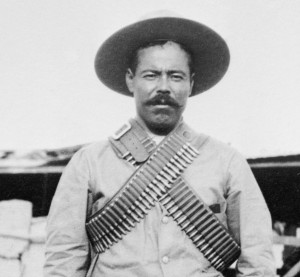
The Punitive Expedition
After Pancho Villa’s attack on Columbus, New Mexico, the US Government launched a full-scale invasion of Mexico that was called the Mexican Expedition. The attack wasn’t really directed at the Government of Mexico, which the US had helped install and supported, but rather was focused exclusively against the Mexican rebels under Pancho Villa (who opposed the US for backing the existing government). The 1st Aero Squadron was pressed immediately into service to support the Expedition.
Arriving at Columbus, the 1st Aero Squadron uncrated the first of its biplanes. Despite the best efforts of the squadron’s commander, Capt. B.D. Foulois, the 1st Aero Squadron was desperately short of supplies and spare parts. Basic equipment and aircraft components were not on hand and an emergency order had only been partly fulfilled before departure — thankfully, wristwatches for the pilots had arrived. Besides the commander, the other pilots of the 1st Aero Squadron included Capt. Townsend F. Dodd, Lt. Joseph F. Carberry, Lt. Thomas S. Bowen, Lt. Carleton G. Chapman, Lt. Herbert A. Dargue, Lt. Edgar S. Gorrell, Lt. Walter G. Kilner, Lt. Ira A. Rader, and Lt. Robert H. Willis. All were in high spirits, hoping to show the Army just what aeroplanes could do in battle.
Just one day after arriving, on March 16, 1916, the first reconnaissance flight was flown by Capt. Dodd with Capt. Foulois (as an observer) on the Curtiss JN-3 S.C. No. 43. As with all of the Army’s aircraft in that era, the plane carried simple markings — a red star on the tail and the large number 43 painted on the sides of the fuselage. Predictably, given that Villa and his men had a week’s time to disperse into the countryside, the plane returned without sighting anything of interest. Maj. Gen. Pershing was already marching his men south in a two-pronged movement, splitting his forces and the air component into two “flying wings” that would operate independently. The 1st Aero Squadron awaited orders to fly south and rushed to assemble the rest of its planes.
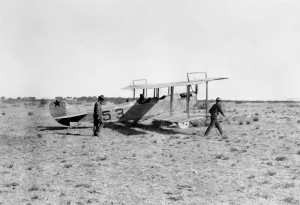
Difficulties of Mexican Operations
The ground campaign penetrated 400 miles into Mexico and engaged Pancho Villa’s men numerous times. However, they were frequently ambushed and the battles were sometimes hard fought. The local Mexican civilian population may not have liked Villa, but they hated the USA even more. Thus, little information and support was received from the locals. Pershing’s forces were fighting on the enemy’s home territory and in the heat of Spring and Summer. To support Pershing, the 1st Aero Squadron had eight aircraft, 11 officers and 84 enlisted men — a single civilian mechanic rounded out the team to help maintain the new JN-3 types.
On March 19, the pilots received their orders to head south from Columbus, New Mexico. In the late afternoon, the eight planes, S.C. Nos. 41, 42, 43, 44, 45, 48, 52 and 53, took off. Being so heavily loaded, each barely cleared the wire fence at the edge of their hastily constructed airfield. With headwinds, incredibly the Curtiss Jenny’s could only barely keep up with the horse-drawn carts of the supply convoy as they worked their way over the rocky tracks below — it was a very inauspicious beginning. Once night fell, the real difficulties began. Only one of the pilots had any night flying experience (and that was just 10 minutes total time!). The pilots were hoping to spot the airfield where Pershing had said he would light a bonfire to signal them in — it was a terrible error and soon the planes separated into two flights of four. None found the field or saw the bonfire. Four landed at La Ascencion and the other four landed elsewhere, two of which were found a day later by an aerial search, the other two remained missing for days.
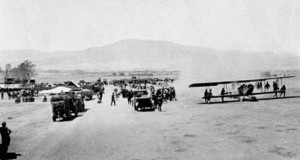
The squadron set up at a makeshift airfield at Colonia Dublán, which also served as Pershing’s field headquarters in northern Chihuahua, Mexico. Strength was low as a result of the deployment — the two planes were still missing and one day after arrival, another one had crashed. Just five planes lined the field, ready to fly. The mission orders came in immediately — almost all were communications missions, however, since the Jenny pilots reported back that they couldn’t clear the mountains. Take offs were from 5,000 feet field elevation and the surrounding mountains were higher than the planes could fly. Further, with every mission they flew, they realized the shortcomings of the Curtiss JN-3 — the plane was hardly suited to the conditions of Mexico. The JN-3s couldn’t provide the full observation/reconnaissance support needed. Maj. Gen. Pershing wrote to his superior officer, Brig. Gen. Frederick Funston his complaints about the lack of effectiveness of the planes:
“[T]he aeroplanes have been of no material benefit so far, either in scouting or as a means of communication. They have not at all met my expectations. The further south Villa goes into the mountains the more difficult will be their tasks, and I have no doubt we shall soon be compelled to abandon them for either scouting the enemy or keeping in touch with the advance columns.”
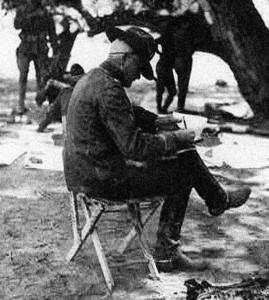
The situation was even worse than reported by Maj. Gen. Pershing. One by one, the planes were grounded for repairs or crashed. Thankfully, they had found the missing two pilots in the interim — one of the planes (S.C. No. 41), however, had crashed and had been stripped clean by the Mexicans. The other was recovered whole. Despite the attrition, throughout the first month of the campaign, they served Pershing by flying mail and dispatches as well as reconnaissance missions. Though it was never enough, they still connected Pershing with his forward units and carried reports of engagements.
Rotating Out for Refitting
By April 20, just a month after arriving in Mexico, the 1st Aero Squadron had but two planes still flyable. They had to retire from the battle. They returned to Columbus, New Mexico, on April 22, where, that very day, they received four new aircraft, all new Curtiss N8 biplanes. Within days, however, the pilots had determined that the N8s were only marginally better than the JN-3s. Rather than send them south, where they would likely last only a few weeks, those planes were instead transferred to North Island, California, where they were put to work training new pilots. Better planes had been put on order and not long after, twelve Curtiss R-2 biplanes arrived by train. Those too proved to be only slightly better than the JN-3s — moreover, the planes were poorly built, arriving damaged and with parts missing. The Curtiss factory apparently had either no quality control or just didn’t care. The 1st Aero Squadron had to make do, repair what it could and deploy again into Mexico.
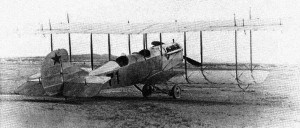
Thus, they flew south once again to support Maj. Gen. Pershing’s continuing advance. With the heat of the summer now coming on strong, dust storms had become more frequent and the planes were often grounded. The wooden propellers were seen to de-laminate daily in the dry heat. The struts supporting the wings also dried out, de-laminated and became brittle in the Mexican desert. After almost every flight, they had to be replaced with makeshift wooden pieces that the enlisted men carved from local trees that they chopped down. Thus, the 1st Aero Squadron only remained in the fight this second time until August 15, 1916. By then, in both deployments, they had flown 540 missions of all types — fewest of all, sadly, were the much-needed reconnaissance missions.
Final Thoughts
Though the 1st Aero Squadron’s first combat operations brought in very mixed results, the overall goals of the Mexican Expedition were also never reached by the ground forces either. Pancho Villa was not captured, his men were not defeated, nor were the lands cleared of rebel forces. The logistical deployment into Mexico had been very nearly a complete disaster — only averted when the Secretary of War, Newton Baker, personally authorized $450,000 of unappropriated funds for the immediate purchase of a fleet of trucks to support Pershing. Even then, when the trucks arrived, none of the regular Army troops knew how to drive and maintain them. The 1st Aero Squadron, which used trucks for supporting their aeroplanes, first took on the task of assembling, managing and using the trucks for ground logistics! If not for that, Pershing would have likely had to withdraw.
From that rough start, the 1st Aero Squadron would go on to far greater success. In fact, its first success was actually born of the experience in Mexico, as it forced the US Army to finally budget sufficient funds to build up Army aviation into a more serious operation. Just a year after the Mexican Expedition, the better equipped squadron shipped out to Europe as the United States had entered into the Great War. It was the first aviation squadron to arrive in France — and actually, the only combat ready aviation unit at the time! Fittingly, the commanding officer hadn’t even waited for orders before shipping out; as the ship left the dock, he cabled for approval to deploy. The approval cable met him at the docks of Le Havre, France.
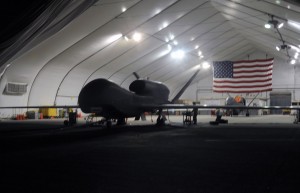
Today, the 1st Aero Squadron is known as the 1st Reconnaissance Squadron and it operates within the 9th Reconnaissance Wing. The squadron flies the RQ-4 Global Hawk unmanned aerial system and the U-2 (TR-1) Dragon Lady. Over the last ten years, they have flown many deployments into Southwest Asia and into the Af/Pak Theater of Operations. Ultimately, the 1st Aero Squadron remains the longest continuously operating unit in USAF history.
Today’s Aviation Trivia Question
What became of Capt. Foulois, the first combat commander of the 1st Aero Squadron?

Thanks again …
I was a member of the the 1st, then a B-47 Bomb Squadron in the 9th Bomb Wing at Mountain Home AFB, Idaho. Our squadron patch, if I remember correctly, was a Neanderthal with a spear.
What is the tri-plane in the second picture of this article? The plane on the left. The picture is captioned “Pilots of the 1st Aero Squadron with their Curtiss Jenny biplanes.” Is it a 1st Aero Squadron self-built triplane Jenny? Is it a mirage from the desert?! I can’t read the letters/numbers on the side of it’s fuselage.
The picture you refer to was not taken during the punitive expedition. I believe it was taken when several planes were deployed to find two lost airmen who got lost in Mexico flying out of San Diego.
Your photos of the Pershing Expedition aeroplanes are excellent. Do you know where I can find any additional photos of these planes, their pilots, or their support personnel and equipment?
Thanks in advance,
Robert M. Estrada
“Flying slower that the ground forces” not good in combat, but that’s the beauty of flying these old birds. I recall flying a replica JN4D along the “concrete compass” I-80 in a slight head wind watching the cars & trucks zip past me. Ah, but I could smell the fresh mowed hay fields & enjoy the beautiful fresh blue sky!